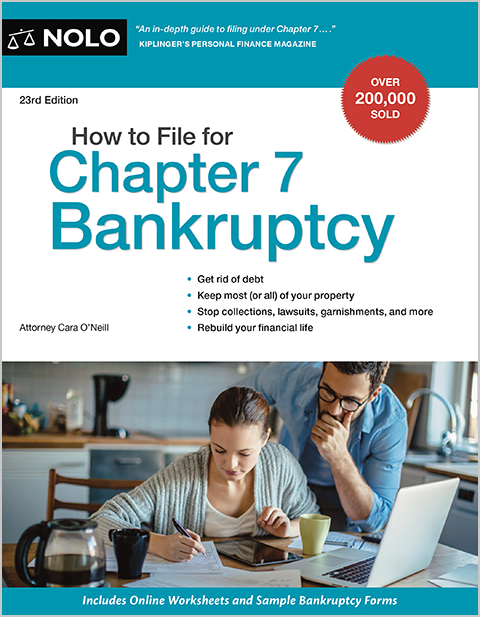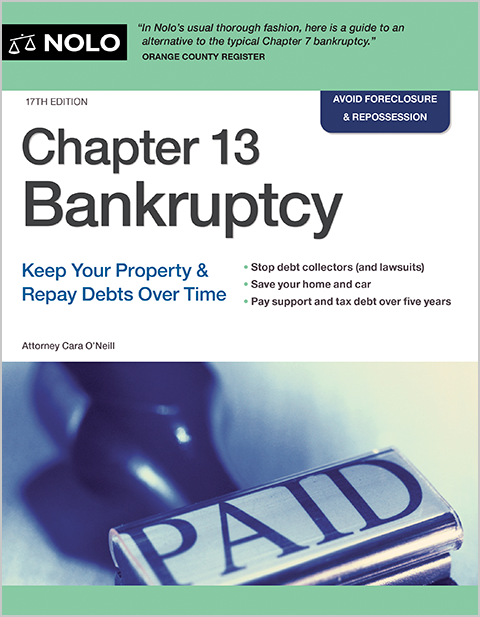You can pay off a Chapter 13 bankruptcy early only by paying 100% of what you owe to all creditors or by qualifying for a hardship discharge due to circumstances beyond your control.
You can pay off a Chapter 13 bankruptcy early, but it isn't easy and often not financially advantageous. Only two methods allow early discharge: paying 100% of what you owe to all creditors, or qualifying for a hardship discharge. Simply coming into money isn't enough—your creditors are entitled to your discretionary income for the whole plan term.
When you enter into a Chapter 13 case, you agree to pay all of your disposable income for either 36 or 60 months. (11 U.S.C. § 1325(b).) Because of this arrangement, getting out early requires meeting strict legal requirements. Understanding how Chapter 13 works will help you see why early exit options are so limited.
How Long Does Chapter 13 Last?
The length of your plan depends on how your family income compares to that of other families of the same size in your state. If your income exceeds the state median, your plan lasts 60 months. If your income is less than the median, your plan minimum is 36 months. In both cases, the plan can't last longer than 60 months. (11 U.S.C. § 1322(d).)
Your income level at the time you file determines the applicable commitment period—the minimum time you must make payments unless you pay all creditors in full.
How Chapter 13 Payment Amounts Are Calculated
Three main variables go into calculating your plan payments: the total amount of debt to be paid, your disposable income, and the amount of any nonexempt property you want to protect. These are the payment obligations that make up a Chapter 13 plan.
Required Debts in Chapter 13 Plans
Your plan won't get confirmed or approved by the court unless these debts are paid in full by the end of the case:
- Administrative claims. These claims include the trustee's fee for administering the case and any amount of your attorneys' fee that you choose to pay through your plan.
- Priority claims. You must pay all of your recent income taxes, as well as any outstanding domestic support obligations, such as child or spousal support, because of their priority payment status.
- Secured claims. You'll pay any past-due mortgage or car payments in addition to the monthly amount.
Your plan won't work if you don't make enough to cover the required payments and your monthly expenses.
Debts You Don't Pay in Full
Unsecured debts, such as credit cards and medical bills, and loans that would ordinarily last longer than the plan, like mortgages or student loans, don't have to be paid in full in your Chapter 13 matter. (11 U.S.C. § 1322(b)(5).)
Calculating Your Disposable Income
If you have any income left over after paying the required debts, you have disposable income. Your disposable income is the difference between your family income and your reasonable and necessary expenses. (11 U.S.C. § 1325(b)(2).)
Because your unsecured creditors are entitled to your disposable income for the life of the plan, the trustee will use it to pay some of what you owe. This is why receiving a windfall during your plan doesn't automatically allow early discharge—the windfall increases your available resources, meaning creditors could receive more.
Sometimes, you'll be required to pay 100% of what you owe, and it happens more than you might think. However, many people only make partial payments to unsecured creditors. Whatever balance remains at the end of the plan is eliminated or discharged.
Some courts allow a zero-percent plan if no disposable income exists. In such cases, unsecured creditors receive nothing at all.
Protecting Nonexempt Property in Chapter 13
In Chapter 13 bankruptcy, you don't turn over nonexempt property (property you can't protect with a bankruptcy exemption) to the trustee like you would in a Chapter 7 case. Instead, you just have to ensure that your plan payments will be enough that your unsecured creditors get at least as much as they would in a Chapter 7 case. (11 U.S.C. § 1325(a)(4).)
In other words, you must pay at least the value of your nonexempt property through your plan payments. This is known as the "best efforts requirement."
How to Get Out of Chapter 13 Early: Your Options
Your Chapter 13 plan must represent your best effort to pay your debts. It's designed so you'll pay the amount you can afford. Therefore, understanding how to get out of bankruptcy Chapter 13 early requires meeting one of two conditions: You can pay everything you owe in full, other than long-term obligations like mortgages, or you can prove a financial hardship.
Otherwise, you must make payments that include your disposable income for the required 36 or 60 months to pay your unsecured creditors as much as possible.
Qualifying for Hardship Discharge
If you've suffered a financial hardship, you can ask the court for a hardship discharge and to end your case early. To qualify, you must show the court that:
- Your creditors have received at least as much as they would receive in a Chapter 7 case.
- Your change in circumstances was beyond your control, such as a layoff or a medical issue.
- Your financial situation probably won't improve.
- Modifying your plan isn't practical because you don't have enough disposable income.
Hardship discharges are challenging to obtain because you must prove that circumstances truly beyond your control have made it impossible to continue. Courts scrutinize these requests carefully because Chapter 13 is designed to be flexible, and plan modifications are the preferred solution to temporary financial difficulties.
Paying All Creditors to End Early
Once you pay 100% of the allowed claims, including unsecured claims (essentially, you pay everything that you owe), the court will grant your discharge even if you haven't reached the minimum number of payments. (11 U.S.C. § 1328(a).)
This requires paying off Chapter 13 after 36 months if you have enough disposable income during your plan term to do so, or if you receive a windfall that will pay 100% of your allowed claims. The windfall can come from bonuses, lottery winnings, an insurance claim, a gift, a loan, or virtually any other source.
Important consideration. You can't simply pay off the amount remaining in the plan at your current payment rate. Coming into a large amount of money suggests an income increase, and your creditors are entitled to receive your discretionary income for the length of your plan. You can expect your creditors or the trustee to investigate whether you can pay more before approving early discharge.
To pursue this option, you'll need to work with your bankruptcy attorney to file a motion with the court requesting early discharge after full payment.
Why Early Payoff Might Not Be Advantageous
Although you might want to end Chapter 13 bankruptcy early, it might not be financially beneficial. Chapter 13 bankruptcy works by requiring you to repay certain debts, with remaining funds going toward unsecured debts. After the repayment period ends, any remaining unsecured debt gets discharged.
In other words, following the confirmed repayment plan for the full duration would likely result in you paying significantly less overall than if you decide to end the repayment plan early by paying 100% of claims. Unless you're facing denial of a job opportunity or other compelling circumstance requiring immediate discharge, completing the full plan term maximizes your financial benefit.
What to Do if You Want to Pursue Early Discharge
If you're considering ending your Chapter 13 case early, take these steps:
- Contact your bankruptcy attorney. Your attorney can evaluate whether you qualify for early discharge and explain the process for requesting it.
- Calculate the total required payment. Work with your attorney to determine exactly how much you would need to pay to satisfy 100% of allowed claims.
- Understand creditor objections. Be prepared for creditors or the trustee to object if you received a windfall, as they may argue you should pay more than currently planned.
- Consider modification first. If you're facing hardship, a plan modification might be more appropriate than seeking discharge, as it maintains bankruptcy protection while adjusting payments.
- Gather documentation. For hardship discharge requests, compile medical records, termination notices, or other evidence showing circumstances beyond your control.
Other Options: Dismissing or Converting to Chapter 7 Bankruptcy
If you want out of your Chapter 13 case, you can stop making payments and walk away. The court will eventually dismiss the case, and you'll remain responsible for any outstanding balances and accumulated interest. The other possibility is to convert from Chapter 13 to Chapter 7. Your income must be low enough to pass the means test, and you could lose property not covered by bankruptcy exemptions.
Evaluating your options can be complicated. The best way to determine the right course for you is to consult with a bankruptcy lawyer.
Need More Help?
Did you know Nolo has made the law accessible for over fifty years? It's true, and we wholeheartedly encourage research and learning. However, online articles and resources can't address all bankruptcy issues and aren't written with the facts of your particular case in mind. The best way to protect your assets in bankruptcy is by hiring a local bankruptcy lawyer.
|
|

